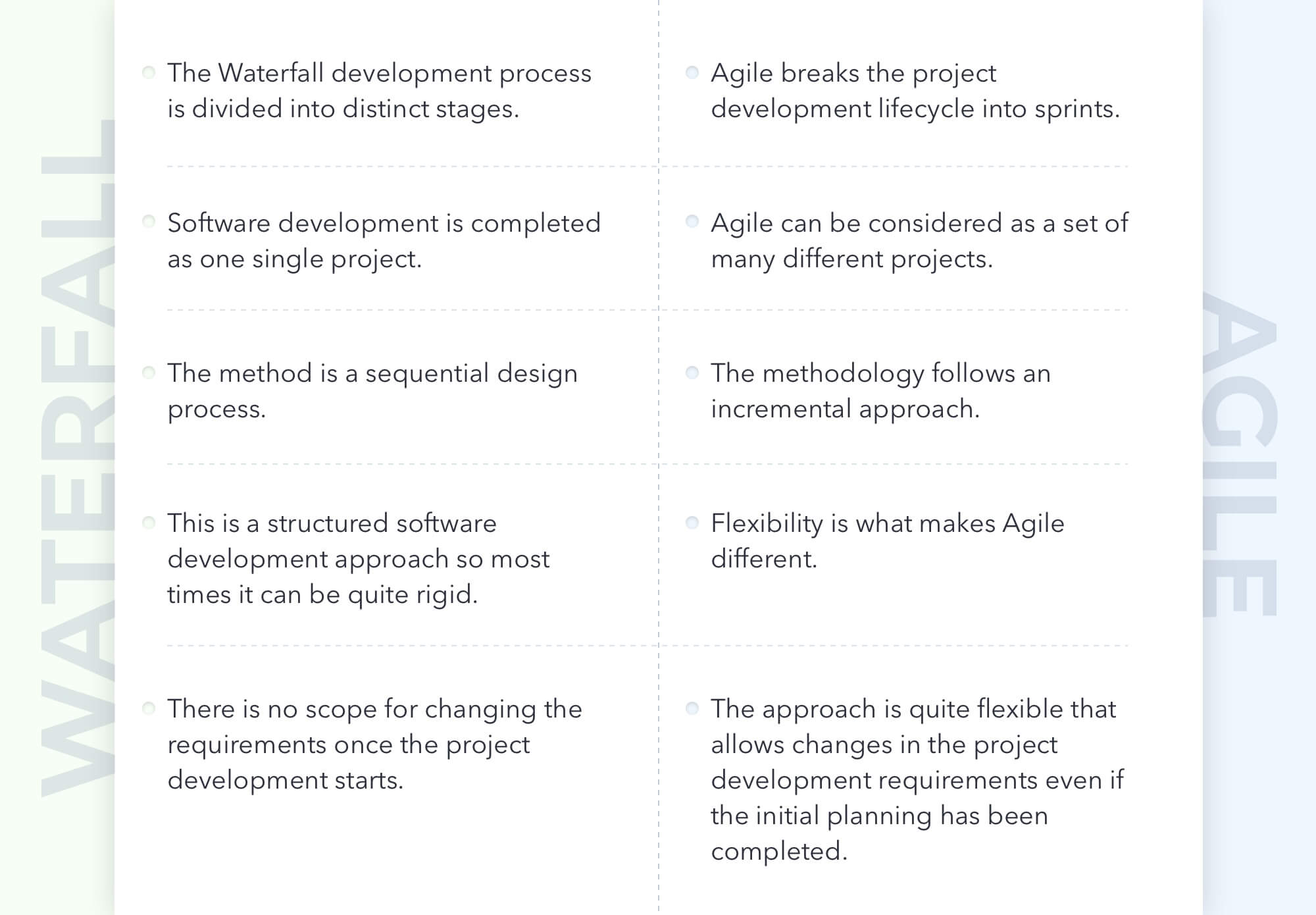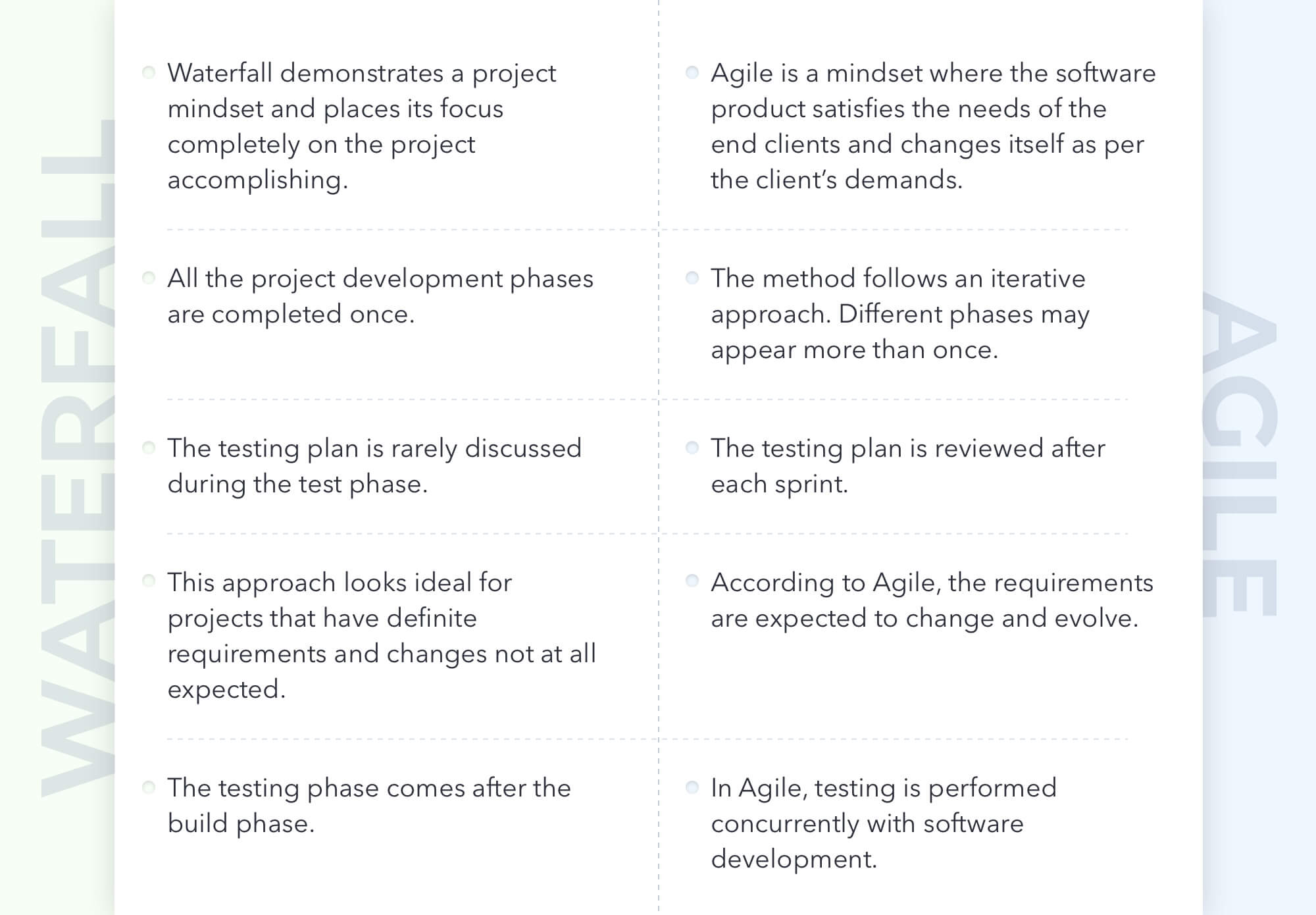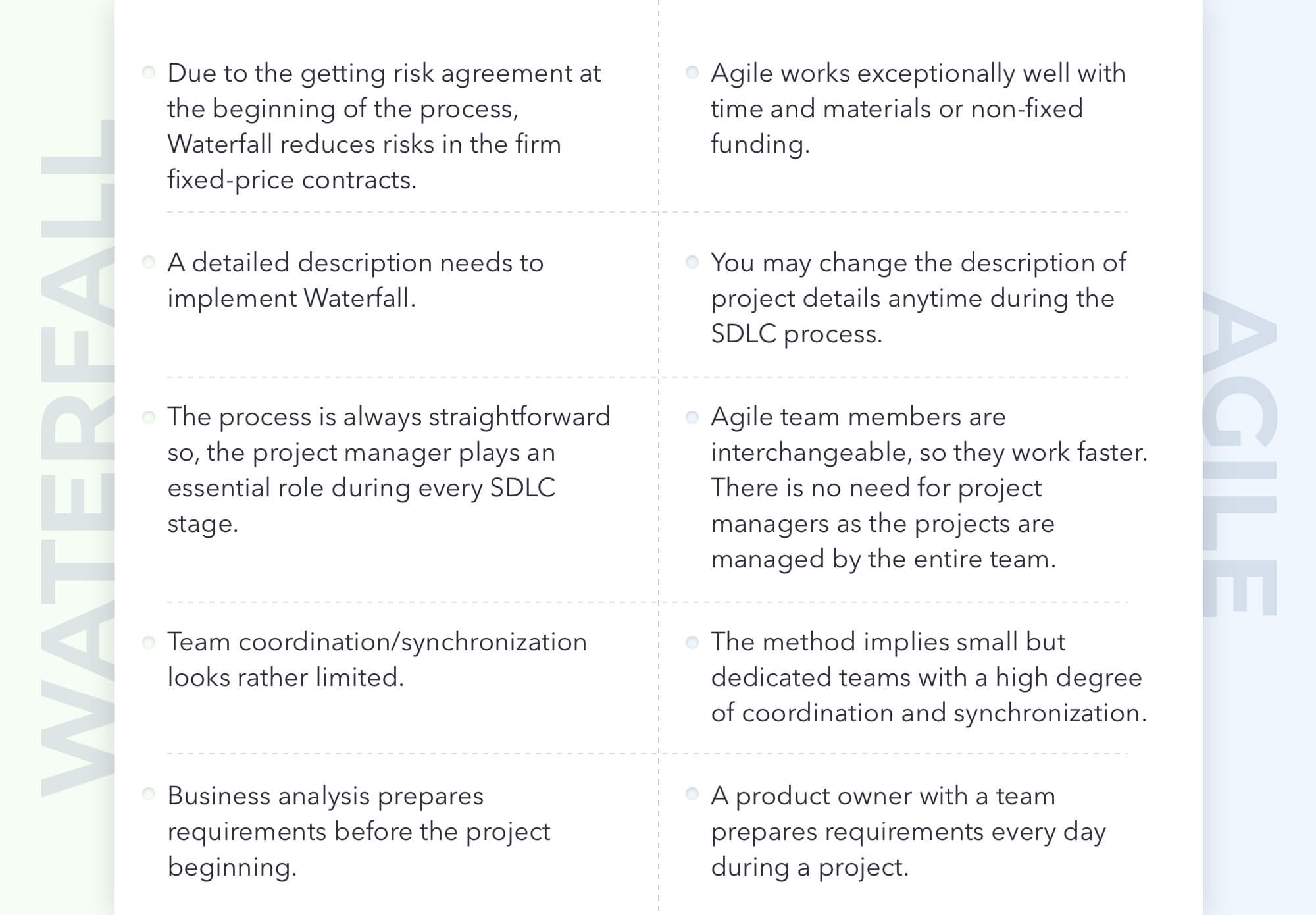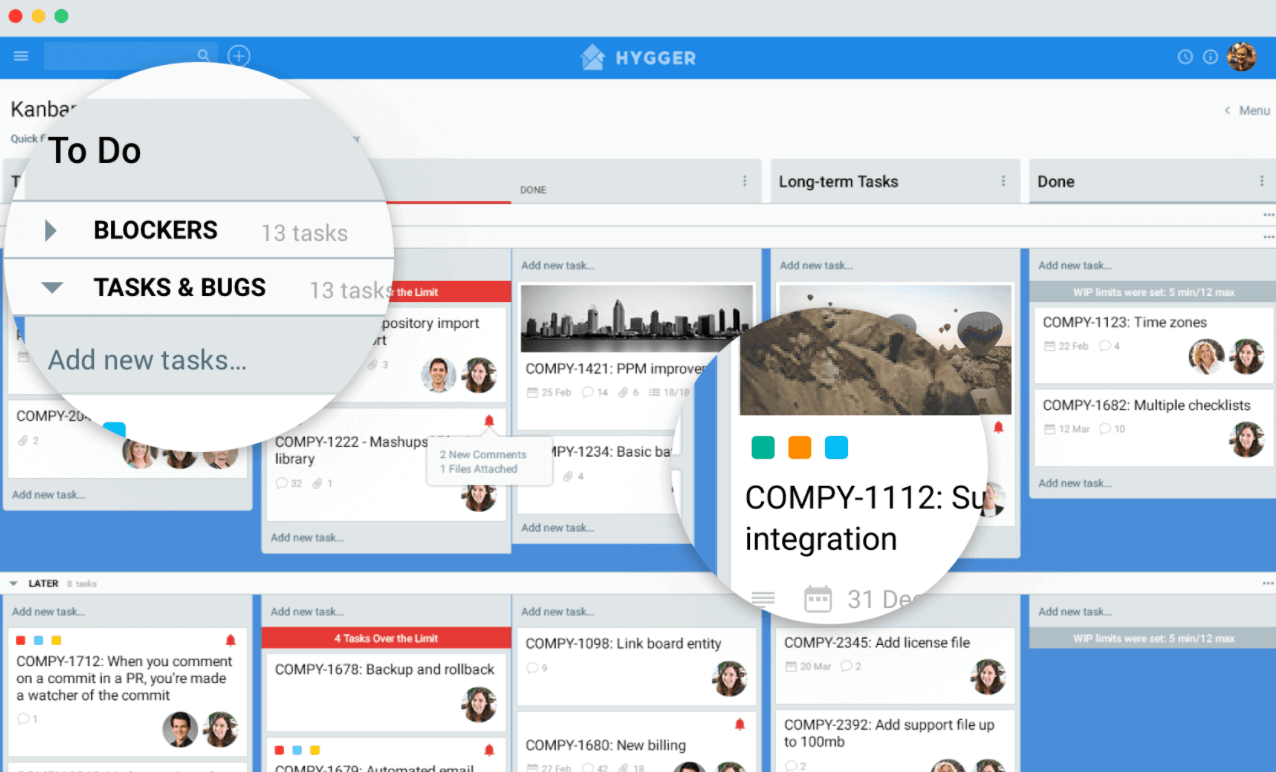Agile vs Waterfall
Defining the difference between two powerful methodologies.
Browse topics
One of the most challenging and eternal questions in project management is “What way of organizing the work of software development to choose?” This is about development methodologies. This topic gets a lot of discussions and hot debates as every software development project start with the selection of implementation methods.
There are two basic and most popular methods of managing projects in the modern software development industry: Agile and Waterfall.

- Waterfall is the first of them. It can be also called the traditional method of software development.
- Agile project management is the second one. This specific type of Rapid Application Development is newer than the first type (it originated in the 2000s) and it is typically implemented with Scrum or Kanban.
Agile vs. Waterfall
What is the difference between both methodologies? They both are usable and mature. The selection of a certain methodology depends on the particular project and the company that performs it.
In this article, we define the main advantages and disadvantages of each approach to software development and offer a quick differentiation of both methodologies, which we have posted in a handy infographic at the end of the post. So, let’s get started!
If you have no time for details, here’s a brief Agile vs. Waterfall comparison table:
Quick Agile and Waterfall Comparison Table

If you want to get some details, it is worth starting with the basics.
Introducing the Waterfall Methodology
Waterfall means a linear approach to development. The traditional method is based on strict planning and performing the project plan step by step. It is usually used by companies with a hierarchical structure.

The sequence of events according to this method looks that:
- Gathering and documenting requirements. During the next stages of work, all the actions will be conducted based on this documentation. The customer is involved in the project performance only at the first and the last stage.
- Design. At this stage, the developers try to find a suitable form to meet all the customer’s requirements.
- Code and unit test. The main task of this stage is to test codes and unites.
- After that, the system and user acceptance are tested.
- Fixing issues.
- Delivering the finished product to the customer.
All these events in a traditional development project represent a distinct stage of software development. Typically, every stage finishes before the next one can begin. Additionally, there is a stage-gate between each. For example, a client must review and approve requirements before design can begin.

Waterfall model advantages
- This is a clear framework and one of the easiest models to manage. You get a clear understanding of your project timeline and deliverables before the project begins. The project scope is agreed upon by the development team and the clients in advance.
- It provides faster project delivery.
- The method works well for smaller-size projects (with easily understandable requirements).
- Planning and designing look straightforward because developers and customers can agree on what will be delivered early in the development lifecycle.
- It offers well-documented processes and results. Every project phase is documented in detail to eliminate misunderstandings and shortcuts.
- Progress is more easily measured, as the full scope of the work is known in advance.
- It provides a shared load. Depending on the phase, every team member can focus on other aspects of their work.
- This is a hands-off approach. After the initial design and project plan are in place, there is little requirement for ongoing customer presence until the review phase.
- It looks rather beneficial to manage dependencies.
- It is easily adaptable for shifting teams.
Waterfall disadvantages
As you can guess, such an approach has lots of disadvantages. Here are some of them:
- It looks not ideal for large-size projects.
- The method is less effective if the requirement is not clear in the very beginning.
- It is rather difficult to move back to make changes in the previous stages.
- The testing process starts once development is over. So, there is a high chance of bugs to be found later in the development where they are expensive to fix.
- After the project is finished, the customer can be disappointed with its results, because all the work on a project was based on the initial documentation, and the outcomes may not meet the customer’s expectations.
- It provides less customer involvement. Some clients will want more involvement as the project proceeds.
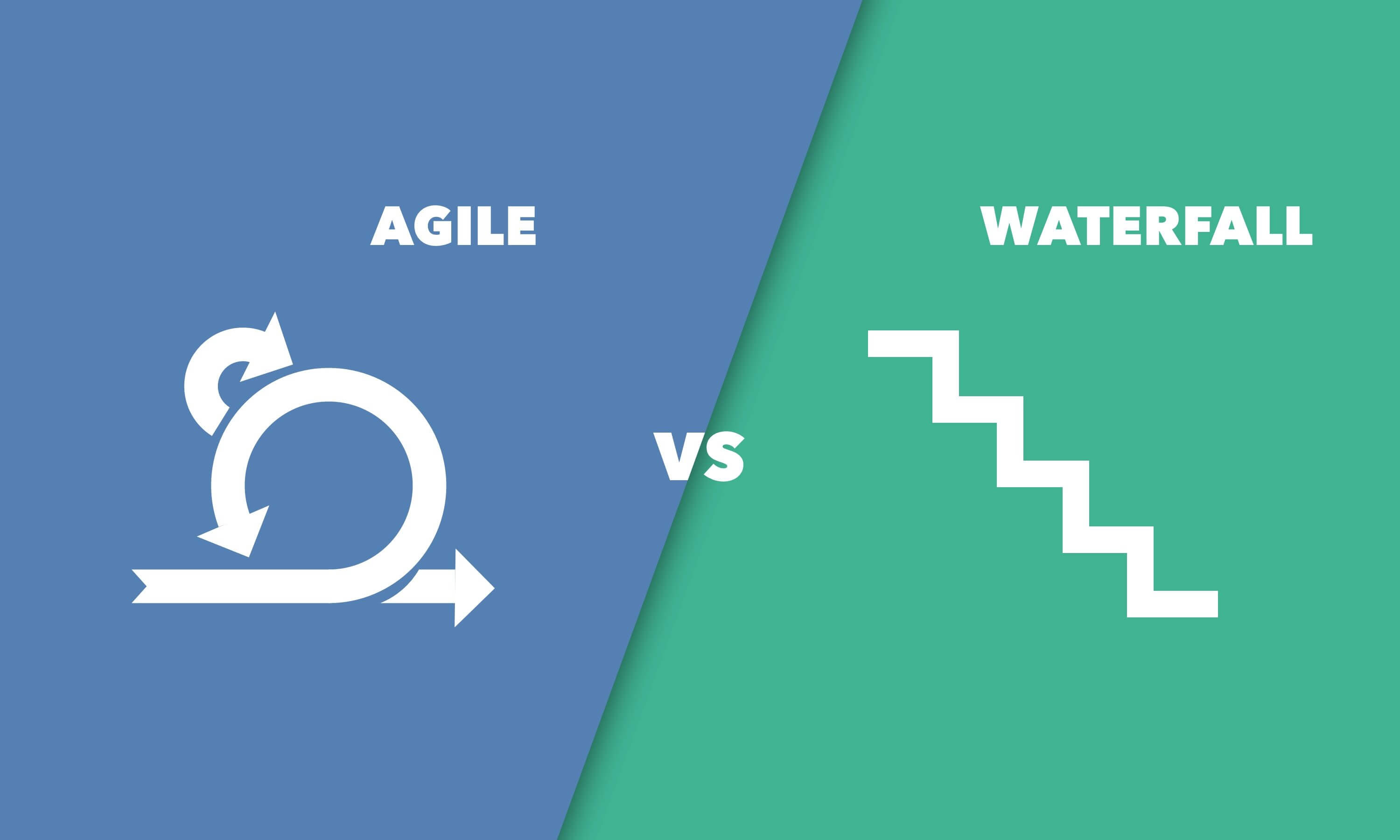
Introducing the Agile Methodology
This iterative approach to development emphasizes the rapid delivery of an application in complete functional components. All timeframes here are grouped into phases called sprints. Every sprint has a defined duration with a running list of deliverables, planned at the start of the sprint. Deliverables are prioritized by business value as determined by the customer.
In this methodology, development, and testing activities are concurrent (unlike in its opponent). Its transformation allows more communication between developers, managers, testers, and customers.
The difference of Agile in the comparison Agile vs Waterfall is that the traditional approach values planning ahead, while the iterative and team-based approach values adaptability and involvement.
There are different flows of its development that share some basic similarities:
- XP (Extreme Programming)
- Kanban
- Scrum
- Lean software development
- Agile Unified Process
The approach has two major elements: teamwork and time. It breaks the project into individual deliverable pieces instead of creating a timeline for one large project.
What are the principles of Agile development?
There are some core principles that project in this method follows:
- Adaptability. The ability to change design, requirements, architecture, and deliverables are very important.
- Lean development. The end product should be as simple as possible.
- Customer involvement. The development requires close collaboration between the customer and the development team.
- Teamwork. The method values teamwork almost above all else. The teams aim to continually assess how they can become more effective and adjust projects as they go.
- Time. The methodology breaks projects into very small units of time. These are the time-boxed sprints.
- Sustainability. The model places value on setting a sustainable pace for software development instead of pushing for faster deadlines in exchange for an unfinished project.
- Testing. The method insists on testing through every phase of the project.

Agile method advantages
- The methodology is focused on the client process. It makes sure that the client is continuously involved in every stage. Customers have an opportunity to see the work being delivered and to make decisions and changes throughout development.
- Customers have a sense of ownership by working extensively and directly with the project team throughout the project.
- Development is often more user-focused. This is the result of more frequent involvement of the customer.
- It guarantees that the quality of the development is clearly maintained.
- The Agile offshore development process is completely based on incremental progress.
- Teams are extremely self-organized and motivated. This provides better results for development projects.
- The clients know exactly what is complete and what is not which decreases risks in the development process.
- The deliverables are flexible. Stakeholders can set deliverables by order of importance.
- It offers higher quality and user-friendly products. Clients can provide feedback after each sprint, so the products developed using this method often end up being very user-friendly.
Agile disadvantages
- It is not useful for small development projects.
- It provides intense commitment. Unlike the traditional approach, Agile development only works well when the entire development team is committed to the project for the duration.
- The projects can easily go off track if project managers are not sure what outcome they want.
- The meetings require the presence of an expert to take important decisions.
- Communication issues. The method requires a high level of collaboration, so development projects using this methodology will also require a high level of communication.
- The cost of implementing the methodology is a little more compared to other methodologies.
- The high degree of customer involvement may present problems for some clients who may not have the time or interest in this type of participation.
- The close working relationships in the iterative approach require working in the same physical space, which is not always possible.
Detailed Differences Between Agile and Waterfall Models
Making the Choice Between Agile and Waterfall
Your ultimate choice between these two methodologies depends much on several factors.
Waterfall may be the best choice if there is no (or limited) access to a customer to provide constant feedback. It will also suit projects with a dispersed team, fixed budget, and scope.
Agile looks preferable for more complex and larger projects, where there is easy access to customer feedback. Its flexibility makes the technique more suitable for projects with constantly changing requirements.
The main difference between these methodologies is that the Agile approach to software development has no strict structure.
The way of document management is one more distinction between the methodologies. Usually, Agile teams do not have any documents at all. There is no need for documents because the customer can see the progress of work at any time he wants.
The different way of teamwork is what we see first when we compare and contrast the methods. There is no strict structure in the Agile teams. All their members are interchangeable, so the work goes faster. There is also no need for project managers because the projects are managed by the whole team.
Agile approach is aimed at faster implementation of any project. The work of teams is subdivided into 2 – 4 weeks’ long sprints and the customer can see its intermediate result at the end of any of them.
Generally, the Agile approach to software development is more flexible and, in most cases, it meets the requirements of customers and final users better. That is why it is more useful for most projects. In recent years, it became the predominant product development methodology, being used by the majority of development organizations.
Even developers still relying on the traditional method tend to use a hybrid approach. Despite the evident success of Agile, the Waterfall model is still a valid approach in certain circumstances.
No matter what methodology you choose, there is a great selection of PM tools available to you.
Project Management Software for Waterfall and Agile
Today many modern PM solutions propose powerful functionality to manage both Waterfall and Agile projects. Hygger.io is a wonderful example.
With roadmaps based on Gantt charts, templates, task lists, reporting tools, and more, it seems like a great solution for traditional management. Hygger allows you to assign tasks to team members and create dependencies between tasks.
Agile admirers enjoy convenient Kanban/ Scrum boards with Swimlanes and WIP limits, subtasks, prioritization and scoring frameworks, etc.
Conclusion
Both popular software development methodologies are rather different and good in their respective way.
To summarize this post, let’s define key differences and highlight them here:
- Waterfall suits projects with well-defined requirements where no changes are expected. Agile looks best where there is a higher chance of frequent requirement changes.
- Waterfall is an easy-to-manage and sequential approach. Its iterative opponent is very flexible and allows you to make changes in any phase.
- In Agile, project requirements can change frequently. In the traditional model, it is defined only once by the business analyst.
- Agile performs testing concurrently with software development whereas in Waterfall methodology testing comes after the build stage.
- In an Agile project’s description, details can be altered anytime, which is not possible in Waterfall.
What software development methodology do you prefer? Which method do you prefer in the battle of these giants? Feel free to share your experience below.
*the pictures used are from unsplash.com and pexels.com (A. Beliaikin)

